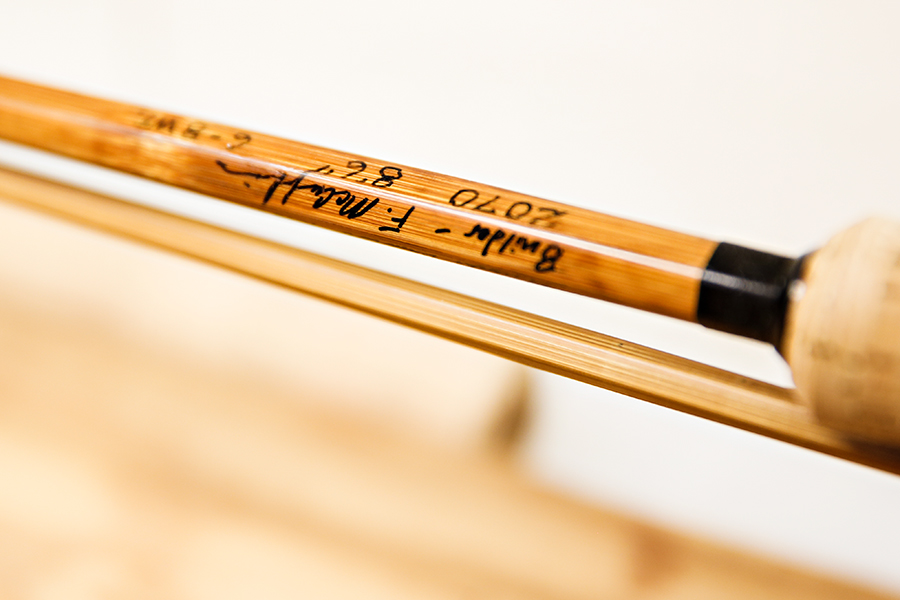There are as many reasons to enjoy fly fishing as there are fly choices at the local outdoor shop — it’s a way to catch food, a way to spend time in the water, and a way of life.
For Floyd McCubbins, the love for fly fishing is best illustrated in the month of July, when he leaves the comforts of his Kalispell home and heads to the comforts of Spotted Bear, where he fishes with his son who takes weeks off each year for the trip.
With the good weather and native trout calling, it’s rare to find him in the workspace of his basement, where he builds and refurbishes split-cane bamboo fishing rods for his business, Grizzly Bamboo Rods.
Bamboo rods hang all over the work area, from the rafters and from the walls; there are new models, and even models that still sit in pieces of bamboo waiting to be turned into a fishing rod. There are also rods that sag with the weight of history, those from 1912 or 1894.
It’s a business that grew out of a hobby, which grew out of love for the sport. McCubbins, who has been living in Kalispell since 1959, said it all started when he was about 6 years old and an aunt in Walla Walla, Washington took him fishing with worms nearby his grandparents’ home.
“It’s something I’ve done all my life,” McCubbins said. “I’ve been outside all my life.”
He’s also had a motto from his father his whole life, stemming from his dad running a sheet-metal shop: Do it right, and if it’s not right, take it apart and do it again.
This is how McCubbins lived his life and career as an engineer, where he spent 20 years working with F.H. Stoltze Land and Lumber and 11 years with the U.S. Forest Service. With the Forest Service, McCubbins built bridges, including the one he uses to get to his fishing haven in Spotted Bear.
Those same engineering principles went into the bamboo fly rods, which are made from Tonkin cane. He dabbled with the process for about a decade before settling on his preferred method. The bamboo is planed down into strips, which are glued together in a hexagon to build the rod. It’s tedious, time-consuming work, but McCubbins said it’s also very satisfying.
He prefers bamboo to graphite because of its durability and its speed.
“It’s slower, and it’s more accurate than graphite,” McCubbins said.
Of course, graphite rods can be mass-produced in a relatively short time, whereas it takes McCubbins about 40 hours for a restoration job, and anywhere from 80 to 120 hours to build a new rod. He likes to say that speed is the enemy of quality and perfection in production.
In the time he’s been in business, he’s built about 80 fishing rods, many of them on spec. A basic two-piece 6- or 7-foot fly rod runs $600, and the longer 11- to 14-foot rods three-piece rods are $1,000.
“Bamboo doesn’t stress-break,” McCubbins said, demonstrating by placing pieces of a 100-year-old rod on the ground and stepping on them. “This would shatter graphite. Bamboo breaks through negligence of use.”
To ensure this in his products, McCubbins is helping develop a machine to stress test the fly rods he builds. But he’s also got a couple of other secrets he didn’t mind sharing. First, he varnishes his rods with Gorilla Glue. Secondly, each reel gets a test from Missy, his faithful cat who follows him around like a dog.
McCubbins flicked the fishing line at the cat while he spoke to visitors, showing how Missy gets involved in the process. Sure enough, the cat took the line and started to make off with it.
“She’ll empty a whole reel,” he said. “All rods are cat tested.”
For more information on Grizzly Bamboo Rods, visit its Facebook page.
